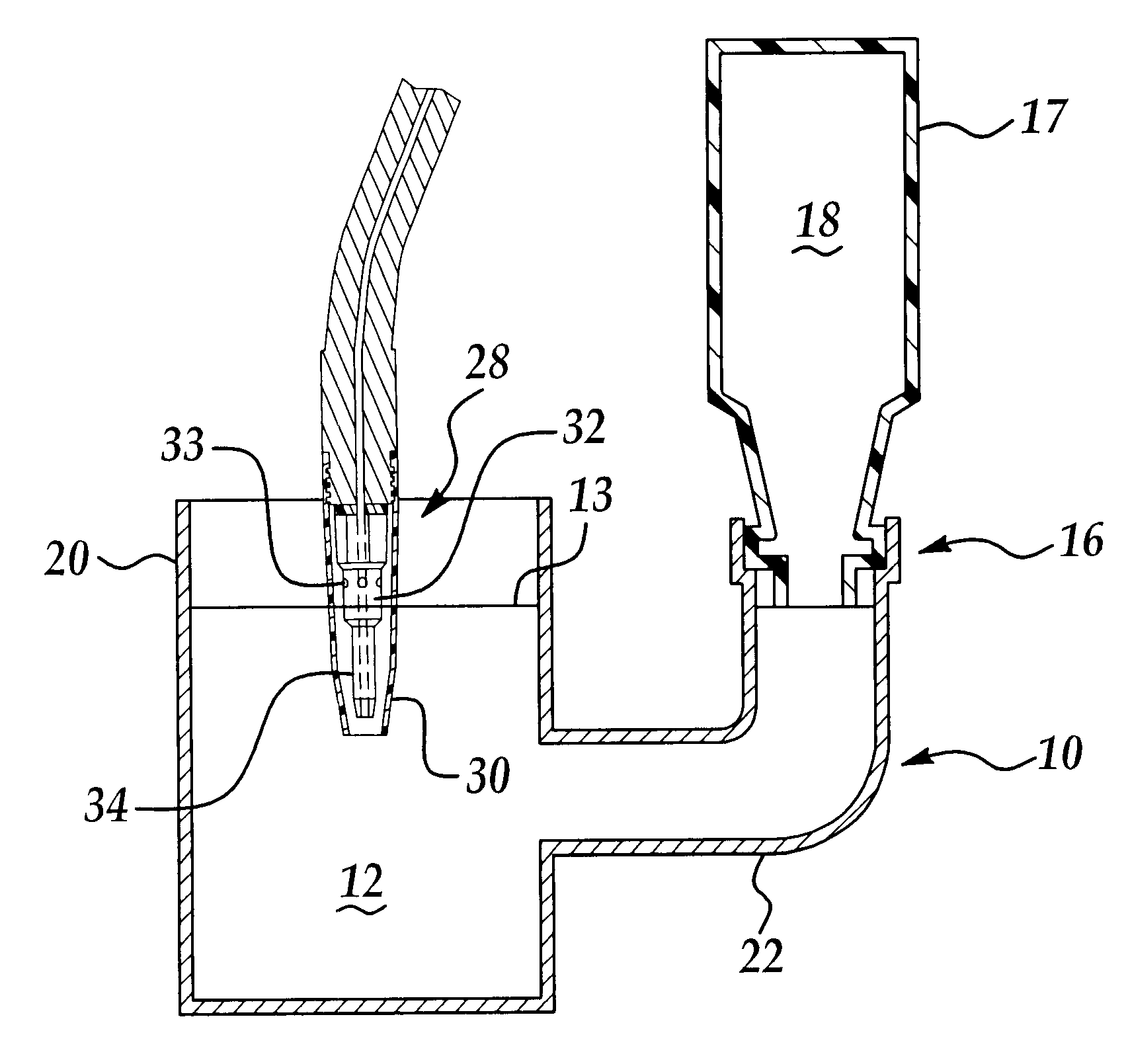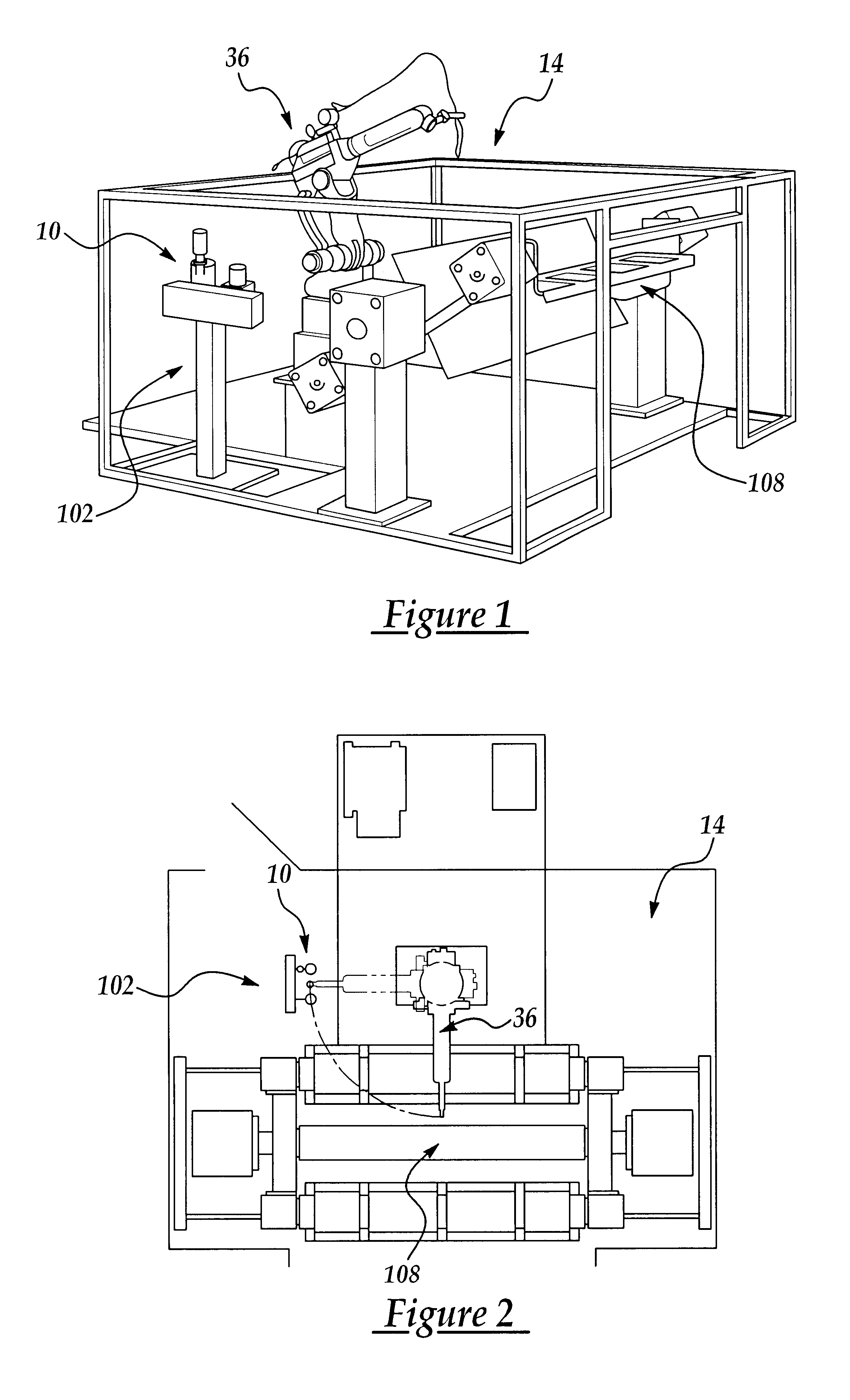Implementation system for continuous welding, method, and products for the implementation of the system and/or method
a technology of continuous welding and implementation system, applied in the direction of weld torches cleaning, manufacturing tools, liquid cleaning, etc., can solve the problems of deterioration of strength and quality of welds, disturbed flow of inert gas to welds, and accumulation of dust, so as to improve the length of continuous operation
- Summary
- Abstract
- Description
- Claims
- Application Information
AI Technical Summary
Benefits of technology
Problems solved by technology
Method used
Image
Examples
Embodiment Construction
Referring to the Figures, wherein like numerals indicate like or corresponding parts throughout the several views, with particular reference to FIG. 5, an apparatus 10 for providing a bath 12 of a fluid to an automated welding system 14 is shown at 10. The apparatus 10 includes a port 16 for the adaptation of a feed container 17 of fluid 18, a reservoir 20 which is accessible to atmosphere, and a passageway 22 for communication between said feed container 18 and said reservoir 20. The port 16 is preferably comprised of a connection between a threaded spout 5 to the feed container 17 containing the fluid 18 and a mated threaded et 19 to the passageway 22. The apparatus 10 further provides means for maintaining the fluid bath 12 at a constant level within the reservoir 20 until the feed container 18 is exhausted. The relationship between the reservoir 20 and the feed container 18 is such that the apparatus 10 provides a balance between the surface tension of the fluid within the reser...
PUM
| Property | Measurement | Unit |
|---|---|---|
| surface tension | aaaaa | aaaaa |
| friction | aaaaa | aaaaa |
| temperature | aaaaa | aaaaa |
Abstract
Description
Claims
Application Information
 Login to View More
Login to View More - R&D
- Intellectual Property
- Life Sciences
- Materials
- Tech Scout
- Unparalleled Data Quality
- Higher Quality Content
- 60% Fewer Hallucinations
Browse by: Latest US Patents, China's latest patents, Technical Efficacy Thesaurus, Application Domain, Technology Topic, Popular Technical Reports.
© 2025 PatSnap. All rights reserved.Legal|Privacy policy|Modern Slavery Act Transparency Statement|Sitemap|About US| Contact US: help@patsnap.com



